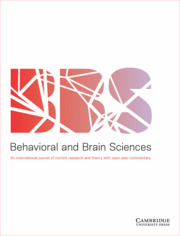Crossref Citations
This article has been cited by the following publications. This list is generated based on data provided by Crossref.
Gopher, Daniel
Krupenia, Stas
and
Gavish, Nirit
2010.
Advances in Cognitive Ergonomics.
Vol. 20105234,
Issue. ,
p.
883.
Mantel, Bruno
Stoffregen, Thomas A.
Campbell, Alain
Bardy, Benoît G.
and
Ben Hamed, Suliann
2015.
Exploratory Movement Generates Higher-Order Information That Is Sufficient for Accurate Perception of Scaled Egocentric Distance.
PLOS ONE,
Vol. 10,
Issue. 4,
p.
e0120025.

